Surprising Special Collections

The Special Collections of the University of Reading is a trove of rare, unique, important and surprising materials. We bring together the University of Reading’s collections of rare books, archives and manuscripts. In this exhibition we have pulled together some of the surprising and serendipitous moments from our collections!
Special Collections offer a remarkable resource for collections-based learning and research across the University, the collections are here for everyone to discover, explore, and be fascinated by, from schools and group visits, to creative practitioners and members of the public.
For guidance on how to access our material, see our reading room information page, and advice for digital access to our collections.
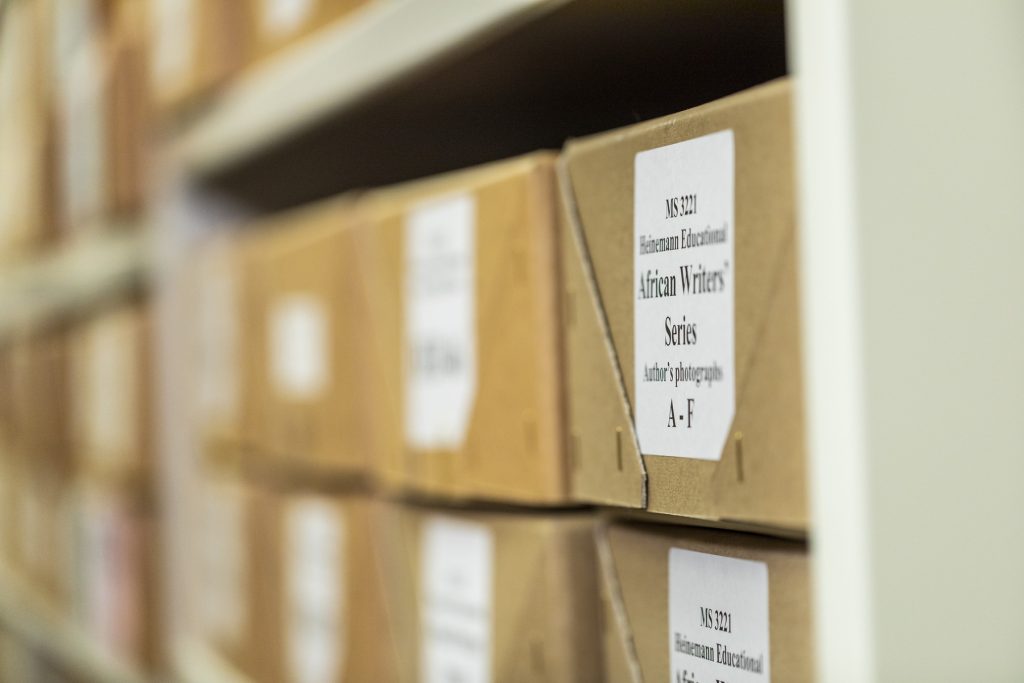
5 kilometres of archives
Our collection of archival material began in earnest in the 1960s with the acquisition of a number of publisher’s archives. And since then has demonstrated a commitment to collect and make available the records of printers and publishers in our vast Archive of British Printing and Publishing.
Complimenting this is a collection of Writers’ and Artists’ papers, where artist Aubrey Beardsley, novelist and dramatist Elinor Glyn, and the musician Gerald Finzi are among the diverse and important figures whose papers we hold.
Other important people are represented in our collections of papers belonging to academics of the University of Reading. The papers of the mathematician Richard Rado, zoologist Francis Cole, literary scholar Edith Morley, and geologist Herbert Hawkins are among our collections.
One of the most recognisable is the Samuel Beckett Collection.
This snapshot represents just a fragment of our archive collections, which span 5 kilometres, and also include business records, the papers of photographers, poets, politicians and more!
You can explore more of our collections through our website.

40,000 rare books
Last year we celebrated 100 years of the founding of the Library at the University of Reading. The founding collections, the Overstone Library and our Reserve Collection are a core component of our rare book holdings at Special Collections.
As the University grew over the 20th century, many notable professors donated their libraries to the University which have included collections of rare books focused on zoology, history, geology, mathematics, marine biology, and palaeobotany! In addition to the libraries of professors, we also hold the historic libraries of a number of local Parish churches, Henley, Abingdon, Buckland, and Didcot.
Alongside this, the Special Collections library has a number of thematic collections, with strengths in children’s books, the history of printing and publishing, and the private library of the book-collector and composer Gerald Finzi. In total we have around 40,000 rare books!
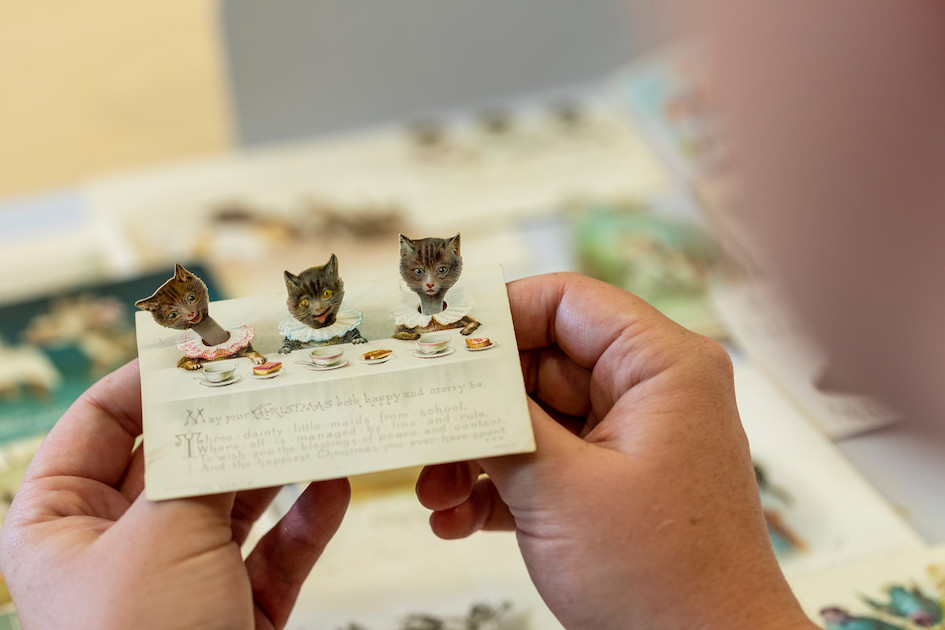
Ephemera
Did you know that as well as books and archive material, we also hold a vast collection of historic ephemera?
Ephemera is a word used to describe material designed to be kept only for a short time; such materials are often discarded after use. The example above uses multiple pieces of paper to allow the cats heads to move, showing how intricate ephemera can be. It is from the John & Griselda Lewis collection which contains some 20,000 items illustrating the history of printing and graphic design from the fifteenth century to the present.
Other ephemera collections include the Porter Collection of Letterbox Ephemera (MS 4204) which – whilst not yet catalogued – contains every leaflet, sample and catalogue that fell through one man’s letterbox for 39 years!
Our colleagues at the Department of Typography & Graphic Communication also have a collection of ephemera you can browse online which contains examples from printed alphabets to zines!

A twelfth century charter
Our oldest archival document is a 12th century charter of Henry II, issued in Westminster between 1155 and 1158 (MS 1488).
The charter tells us that Henry II gave two mills and some land in England to the Abbey of St. Sauveur-le-Vicomte in Normandy. He did this to honour the memories of his parents, Geoffrey of Plantagent and the Empress Matilda, and his grandfather, Henry I.
Born a French Duke, Henry became King of England aged 20, and whilst King of England, showed favour to the Abbey in Reading, founded by Henry I in 1121!
We have several examples of medieval manuscripts in our collections, which includes our European Manuscripts Collection, and a book of hours (MS 2087).

Our oldest printed book
The oldest printed book in our collections is Petrus Crescentius’ Ruralia Commodia.
It is an example of an incunable, which is a term used to describe books produced in the ‘cradle’ of printing, from the late 15th century. There are a number of incunable books (and loose leaves!) in our collections, including an illuminated edition of Pliny’s Natural History printed in Venice in 1472.
Our Ruralis Commodia is extra special because it is still in its original pig-skin binding, meaning the covers we have today are the same as it had in the 15th century. Despite being a popularly produced book of the period, our copy is the editio princeps, meaning that it was the first printed edition!
You can read more about this item in our Featured Item article from 2007.
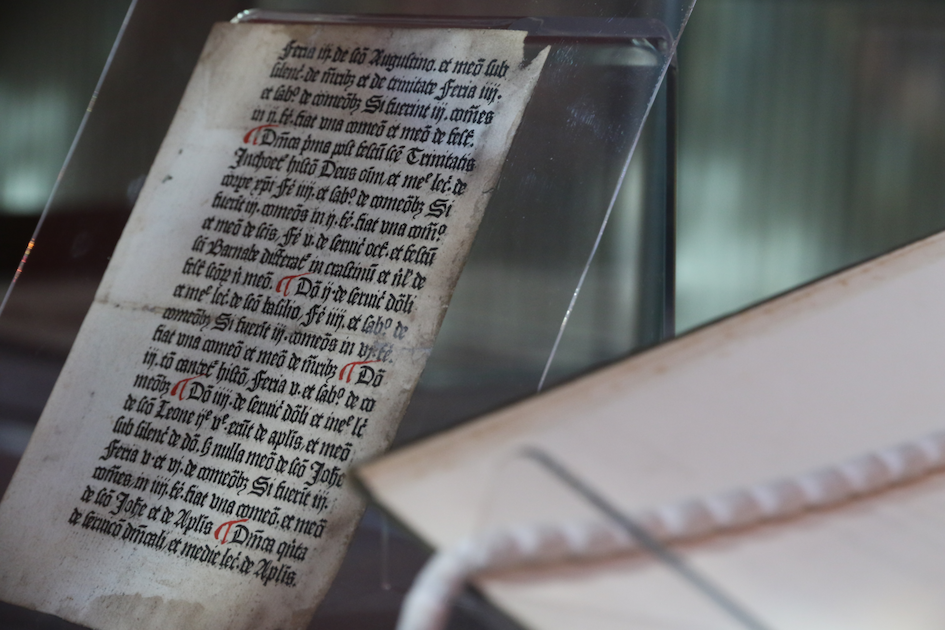
William Caxton in our collections
William Caxton is thought to have established the first printing press in England in the 1470s, after Johannes Gutenberg introduced the printing press and movable type to Western Europe in 1439.
Books printed by Caxton are exceptionally rare. The leaf was found in the John & Griselda Lewis collection, and caused quite a stir when it was discovered in 2017. The two pages are from a medieval priest’s handbook dating back to late 1476 or early 1477. No other copies of the pages, printed either side of a single leaf of paper, are known to have survived!
You can learn more about Caxton and the history of printing in England in this BBC ‘In Our Time’ podcast, and discover more items about Caxton in our collections here.
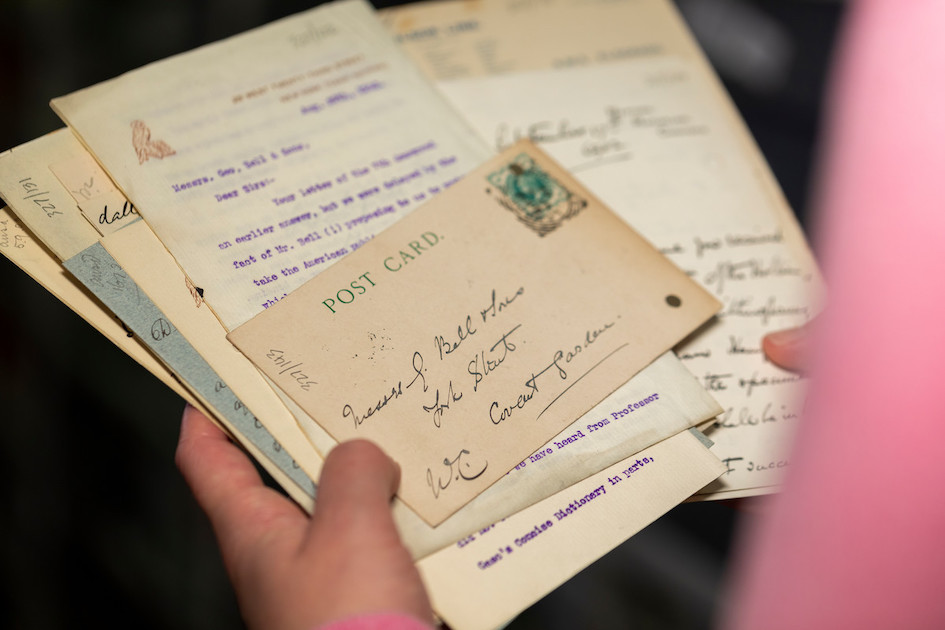
Publishing and Printing
We are home to the The Archive of British Publishing and Printing.
Some of the largest and oldest firms are represented, including Longman, George Allen & Unwin, George Bell & Sons, and Macmillan. We also hold the records of specialist publishers like Mills & Boon and Ladybird.
These collections contain thousands of pieces of correspondence from authors, illustrators, book designers and other important figures, from the poets William Wordsworth and Christina Rossetti, to the psychoanalyst Sigmund Freud and novelist Virginia Woolf.
Not just focused on Britain, our collection also holds papers relating to the publication of Heinemann Educational Book’s African Writers Series and the New Windmill Series. These included writers like Chinua Achebe, Ngũgĩ wa Thiong’o, and Kwame Nkrumah.
Search our catalogue for an author’s name to see if we have correspondence from them!

Books with chains
Did you know that some libraries used to chain their books to their shelves? This example comes from the 16th century and was once part of the library held in Abingdon Parish Church. Originally, this was to prevent the books from being removed from the library. Some of the books in this collection were kept in an aisle under a defective roof resulting in their poor condition.
This reveals how libraries operated in the past, and how collections were build and used historically, and how lots of collections can become endangered. We also hold the historic libraries of the parishes of Henley, Didcot and Buckland which reveal similar and interesting themes of collecting and use.
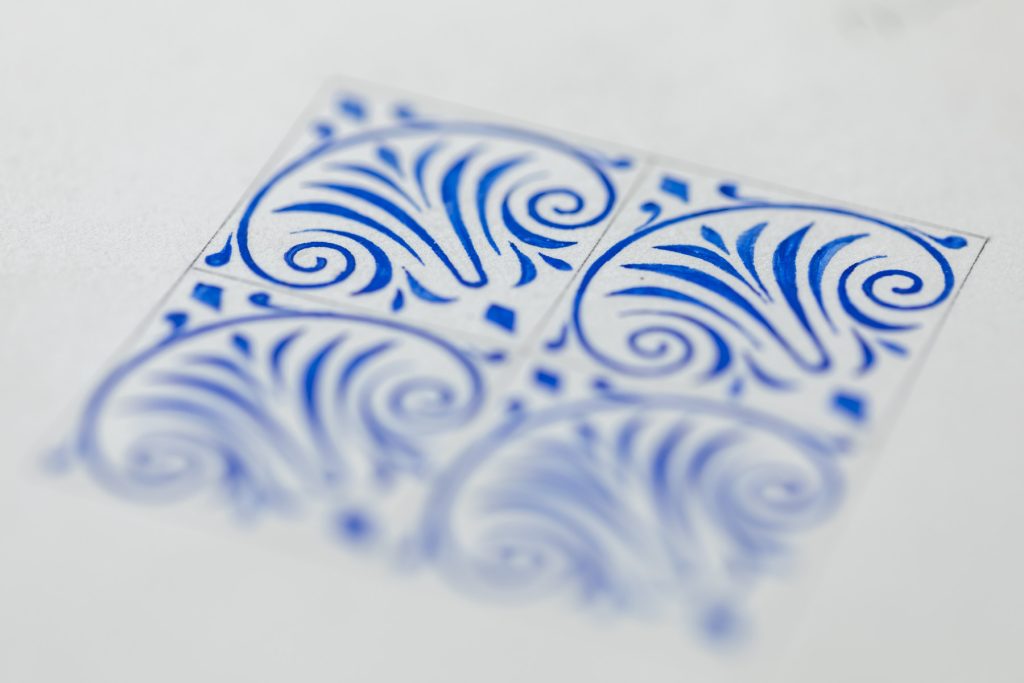
Owen Jones
Owen Jones (1809-1874), one of the most influential design theorists of his time, can be found throughout our collections.
Jones designed the backs of playing cards for the print company De La Rue, designed the Huntley & Palmers‘ trademark ‘garter and buckle’, and was the Superintendent of Works for the Great Exhibition of 1851.
As well as his connections to these companies, Owen Jones was a keen book designer. He published his design masterpiece The Grammar of Ornament in 1856, and pioneered book designing methods that produced beautiful and innovative books throughout the late 19th century.
To see more books by and involving Owen Jones, search our catalogue here.
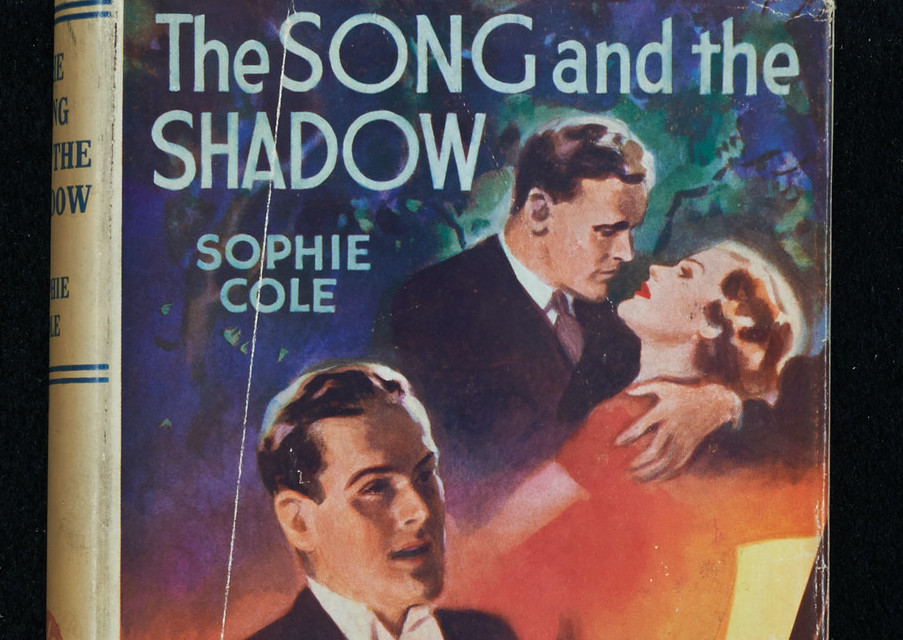
Romance and Zoology
Did you know Sophie Cole, author of some of the first Mills & Boon romances, was the daughter of University of Reading zoology Professor Francis Cole?
Sophie Cole wrote the very first romantic fiction title published by Mills & Boon, Arrows from the dark in 1909, as well as many other titles.
Our Mills & Boon archive collection contains the editorial correspondence of both Gerald Rusgrove Mills and John Boon as well as script registers, publicity material, administrative records and thousands of Mills & Boon Publications covering the period 1910-2008.
We also hold the papers and historical library of Professor Cole.
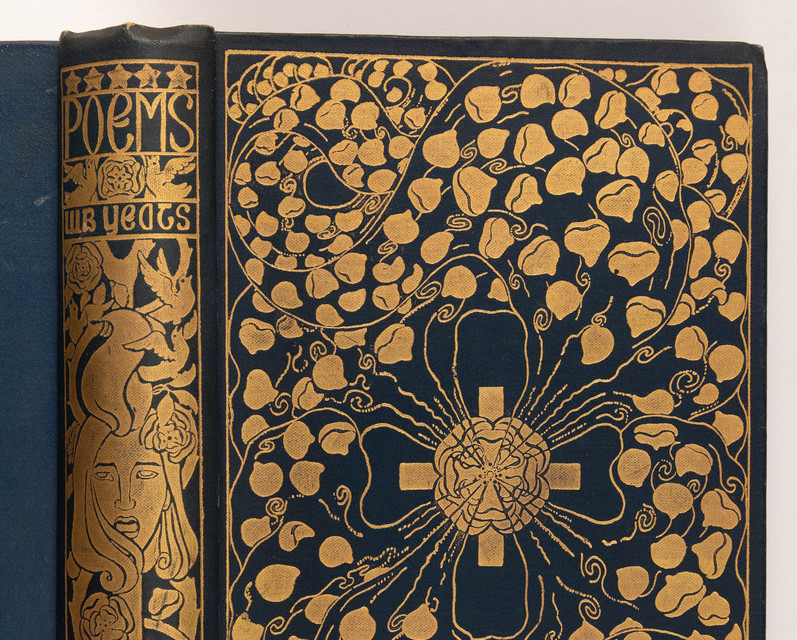
Althea Gyles and W.B Yeats
Did you know we hold over 500 works by and about W.B. Yeats? The works on Yeats are mostly held in our Donald Gordon collection, but with significant material in our Reserve Collections, the Elkin Matthews Collection, Printing Collection, and the Finzi Book Room.
This edition of Yeats’ poems was designed by Althea Gyles (1867-1949), whose papers we also hold as MSS 148, 150-9, and 1163. Gyles was a book designer, artist and writer in her own right.
We hold roughly 30 items by Gyles, including a draft of an untitled play, printed copies of Gyles’ poems and biographical notes and a music manuscript of ‘Carol of Goodwill’, a poem by Althea Gyles set to music by Joseph Holbrooke.